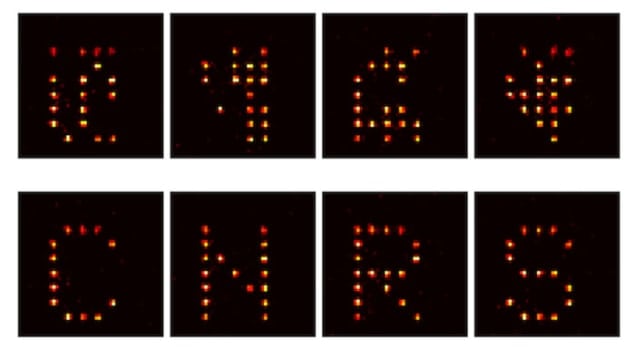
Researchers at the Institut d’Optique Graduate School at the CNRS and Université Paris-Saclay in France have developed a new way to rearrange cold atoms one-by-one in fully ordered arrays. Their technique could be used to simulate quantum systems using neutral atoms held in 2D arrays of optical traps.
Optical traps – or tweezers – work by trapping atoms, molecules or small transparent objects near the focus of a laser beam. The technique allows particles to be picked up and moved using just light. They have played crucial roles in manipulating viruses and proteins for medical research and have also been used for assembling tiny nanomachines. Holding cold atoms in arrays of optical traps has also proven very useful to physicists because the arrays can simulate the quantum physics of solid materials. However, creating such arrays of atoms remains a challenge.
Order from disorder
Now, Thierry Lahaye and colleagues have overcome an important shortcoming of optical traps that makes it difficult to use the technique to assemble perfect arrays of single cold atoms.
When dealing with cold atoms, explains Lahaye, “there is a problem in that each optical trap is randomly loaded in an array and so only has a 50% probability of being filled with an atom at any one time.” “Now for applications we ideally want a fully loaded array – that is, one in which each trap has a probability of 100% of containing a single atom,” he says, adding, “although researchers have tried to solve this problem in a number of ways before now, none have been so efficient and versatile as the one we have demonstrated in this work.”
Maxwell’s demon
Lahaye and colleagues’ solution to the filling problem is to sort disordered arrays of atoms into ordered ones using optical potentials. The researchers used a spatial light modulator to create arbitrary 2D arrays of up to 100 traps. Each trap has a radius of around 1 μm and the traps were separated by about 3 μm. The traps were loaded randomly with rubidinium-87 atoms with a filling probability of 50%.
The team then used fast-moving optical tweezers to rearrange the atoms in the disordered array into a pre-defined spatial configuration of their choice (see figure). The team likens the process to how a Maxwell’s demon operates. “Although only the entropy associated with the atomic positions in the arrays is removed,” they explain, “the much higher entropy associated with the motion of each atom in each trap remains unaffected.”
The occupation of the array sites was measured by illuminating the system with light and observing the fluorescence of the rubidium atoms using a CCD camera.
Quantum simulations
The researchers say that the technique could be used to simulate a variety of quantum systems including quantum magnets. “We are now trying to perform these types of experiments using our technique and combine our previous work in which we excited trapped atoms to highly excited (Rydberg) states to simulate the quantum Ising model (which describes idealized magnets),” Lahaye explains. “We are also looking into using our atom-by-atom assembler to perform quantum simulations of ‘frustrated’ magnets, by comparing what happens in different array geometries, such as square and triangular lattices.”
The atom-by-atom assembler is described in Science.
- A version of this article first appeared on nanotechweb.org



